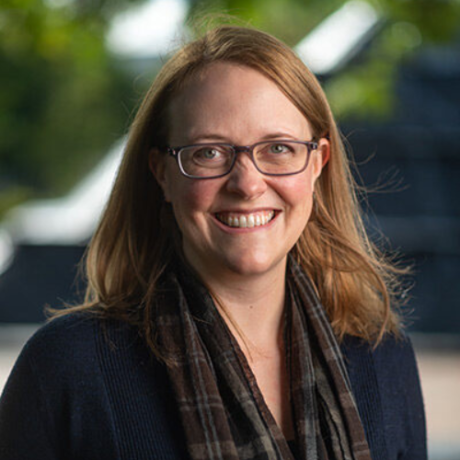Giving That Matters Beyond the Bottom Line
Giving That Matters Beyond the Bottom Line
By Meredith McNabb, Associate Director of Education, Lake Institute

What makes a gift better or worse? For many secular organizations, the conversation might stop at simply “bigger is better.” But for religious organizations, we know that there’s almost always more to it than that—especially when scarcity thinking isn’t clouding our view. For religious congregations and organizations, there are strong considerations of how a donor’s gift helps them feel that they’re truly a part of the membership or the good work being done. There is also often a particularly religious aspect of the gift, where making the gift is, in and of itself, a part of one’s religious practice. Consider Jewish givers living out the right kind of life through justice-minded tzedakah, Sikhs practicing their core value of selflessness through dasvandh financial giving and service, or Christian givers embodying discipleship through tithes and offerings.
There can also be times of year or types of gifts across religious traditions where gifts are more traditionally given or may be particularly auspicious for the giver or for the recipient—where there’s a special blessing or meaning or just an additional layer of goodness to the gift being made in a specific way. For so many religious organizations, the bottom line looms large, and we can miss both the opportunity and the meaningfulness of helping our constituents understand and participate in those kinds of gifts.
Memorials and Anniversaries
On the local and personal level, givers often find that special blessing or meaning when making gifts in honor of loved ones and in celebration of cherished commemorations. When religious organizations make it easy to offer gifts in honor or memory of a loved one, and can help facilitate acknowledgement of that gift, it allows givers to do something meaningful at the same time as they express their generosity and their care. Especially as people seek to downsize or otherwise simplify their possessions, a charitable gift in someone’s name creates a triple-blessing opportunity for the giver to express generosity, for the honoree (or their family) to feel the giver’s care, and for the organization to further their good work.
Commemorations of local events and anniversaries are another way in which gifts can mean more than simply making a contribution. 25th, 50th, 300th anniversaries for a congregation’s founding or for marking a significant milestone (a clergy leader’s 20th year in service, or a building’s 5th or 75th anniversary, perhaps) create a meaningful way for people to celebrate and to be a part of the goodness of the moment. There’s a saturation point to this for any religious organization, of course—the blessing of it may wear thin if there’s a 20th, a 21st and a 22nd anniversary giving opportunity…but religious congregations and institutions shouldn’t let a good anniversary go to waste. It creates a moment for givers to reflect, to express gratitude, and to celebrate.
Religious Observances
Within one’s religious tradition, there may also be seasons and sacred observances where giving is integral to the spiritual practice of the giver, and their gifts offer extra layers of blessing to the giver and the recipient.
Most well-known, perhaps, is giving during Ramadan for Muslim givers. As Rafia Khader, now Director of Religion Programs for Chautauqua Institution, wrote for Lake Institute at Ramadan in 2019:
One of the many oft-repeated acts of worship is giving for the sake of God. Ramadan is a popular time for Muslims to pay their annual zakat (purifying alms), the third pillar of Islam. Zakat is required of every Muslim of financial means and is typically set at 2.5% of a person’s wealth and income. While zakat does not have to be paid in Ramadan, given the month’s most blessed status, many Muslims including myself do.
While I try to give throughout the month, I usually reserve the bulk of my giving (including my zakat) to the last ten days. If there’s a possibility to get an additional reward of 83 years of worship, I’m going to take it!
(To learn more about the tradition of the last ten days of Ramadan and the particular weight of an act of worship—like giving—on Laylat-al-Qadr, read Khader’s full reflection here.)
For Christians who observe Lent, the 40-day period of spiritual preparation before Easter, fasting in various ways is perhaps the best-known spiritual practice of the season (i.e., “giving something up for Lent”), but almsgiving—making charitable gifts to help the poor—is also deeply tied to the season’s religious observance. Some tie their giving directly to their fasting, using the money they save by not consuming coffee or sweets or giving up a whole day’s meals, for instance, to make extra gifts to those in need. Some choose to make outright gifts in place of fasting or otherwise not directly connected to it.
While different traditions have different spiritual practices associated with giving during sacred seasons and holy days, religious organizations of all kinds within those traditions can help support their givers in those practices by creating social media posts and offering education and invitation into making these kinds of meaningful gifts associated with the religious observance.
Cultural Practices
Secular (and simply generalized) Christmas giving has become a part of global culture, but the origins of generosity around the Christmas holiday center on Saint Nicholas and focus on charitable giving. As Andrew Romanov writes for the Greek Orthodox Archdiocese of America:
Famously, St. Nicholas is also said to have aided a poor man who had three daughters but no dowry for them. At the time, remaining unmarried meant that the daughters would have fallen into lives of poverty and public ridicule, and so Nicholas decided to secretly help them. He went to their house under the cover of night and tossed three purses filled with gold coins through the window.
(To learn more about the Saint Nicholas tradition of generosity, consider visiting the St Nicholas Center here.)
An increasing number of Christian congregations seek to emphasize charitable giving in the face of juggernaut Christmas spending as a way to help their congregants and visitors to be blessed by the spiritual practice of generosity. Some have offered “reverse Advent calendars” in which, rather than receiving a treat each day, one offers an item or other support for those in need each day leading up to Christmas. Others have established a sacrificial practice of giving away their Christmas Eve collections to support those in need beyond the congregation itself.
Catholic priest and philosopher Henri Nouwen wrote in A Spirituality of Fundraising, “We truly believe that if their gift is good only for us who receive, it is not fundraising in the spiritual sense.” He invites those who encourage charitable giving to consider how the act of giving is good for the givers themselves, and those considerations stretch across religious traditions.
So, we return to where we started: what makes a gift better or worse? In whatever way we invite giving to religious organizations, the donors are more fully connected to their faith. Do they feel inspired because of the gift they gave? If so, it probably wasn’t because of a bottom line but because of a change of heart.
Expanded Perspective—To Life!
By Danielle Segal, Executive Director, Honeycomb

There are many ways in which giving gifts of charity appear in Judaism, whether that is at a particular holiday, to mark a special occasion, in the memory of a loved one, or if you are inspired by the Jewish tradition of giving 10% of your wealth away*. However, there is a particular spiritual mnemonic for giving which holds unique significance through the power of numbers.
In the Jewish tradition, letters are assigned a corresponding number depending on where they appear in the Hebrew alphabet. This number-letter system is called “Gematria”. A particularly meaningful number in Judaism, when using Gematria, is 18. The number 10 is represented by the letter yud (י), and the number 8 is represented by the letter Chet (ח). Added together they make the word Chai (חי), which means “life”. For this reason, monetary gifts to celebrate milestones or donations to favorite charities are often given using the number 18. Gifts might include the number 18; so $18, $180, or $1,800 for example, or gifts can be made in multiples of 18; so $36, $360, $720, etc. By giving in multiples of 18, both the giver and the receiver of the gifts are being “blessed” with a good life.
The organization where I am Executive Director, Honeycomb, celebrated its 18th birthday this year. For 18 amazing years, Honeycomb has been the leading resource for the field of Jewish Youth Philanthropy. Through training, curriculum, professional development, research, and network-building, Honeycomb is proud to be at the forefront of this amazing field where young people are empowered to make change in the world. Who gives Honeycomb’s work “life”? Who is at the center of all we do? It is of course, the thousands and thousands of teens in our programs who over the years have given their time and efforts to be changemakers. Jewish tradition allows us to celebrate birthdays and milestones in meaningful ways, and the number “18”, reminds us how our lives are entwined with others, the importance of giving back, and how charitable giving can be inspired by– and be a part of– religious practice.
* “Jewish farmers are commanded to set aside a tenth of their produce. This 10% is either given to the priest, to the poor, or taken to eat in Jerusalem. This commandment is the source for the Jewish custom to set aside 10% of one’s earnings for tzedakah.” – excerpt from Honeycomb’s curriculum ChangeMakers: A Journey Through Jewish Teen Philanthropy, page 100.
Danielle Segal is the Executive Director at Honeycomb, and has been working at Honeycomb since 2016. Danielle is from London, United Kingdom, and moved to New York in 2010. Inspired by her love of the Jewish community and combining her teaching, program management and theater skills, Danielle has worked in the non-profit Jewish field for eighteen years as a Jewish educator, camp director and non-profit manager. She has developed countless curricula and resources, including youth philanthropy, Jewish education, and teen leadership courses. Danielle presents at conferences and seminars nationwide about Jewish youth philanthropy, experiential education and teen engagement. She was awarded the Jack Petchey Award for Outstanding Service to Young People in 2009.
Apply Now: ECRF 2025 Scholarship

Lake Institute is pleased to offer partial scholarships for the 2025 Executive Certificate in Religious Fundraising (ECRF) program, thanks to the generosity of our donors through the Thomas H. Lake Scholarship Fund. The scholarship provides $675 in financial support to 12 recipients, helping to make this impactful training accessible to religious leaders committed to growing their ministries. Applicants will be notified of awards by early November, and we recommend registering for your preferred cohort at the time of application. For questions, contact Anne Brock at anmbrock@iu.edu.
Can Struggling Houses of Worship Be Turned Into Housing? Not Always
 New to the Resource Library: Rick Reinhard’s latest article, “Can Struggling Houses of Worship Be Turned Into Housing? Not Always,” originally published by Governing Magazine, explores the trend of converting faith properties into affordable housing. While YIGBY (“Yes in God’s Backyard”) is gaining momentum, it’s not always the best fit for every property. Factors like location and infrastructure can make other uses—such as community services, arts spaces, or social enterprises—more suitable. Dive into the full discussion on finding the right use for faith properties.
New to the Resource Library: Rick Reinhard’s latest article, “Can Struggling Houses of Worship Be Turned Into Housing? Not Always,” originally published by Governing Magazine, explores the trend of converting faith properties into affordable housing. While YIGBY (“Yes in God’s Backyard”) is gaining momentum, it’s not always the best fit for every property. Factors like location and infrastructure can make other uses—such as community services, arts spaces, or social enterprises—more suitable. Dive into the full discussion on finding the right use for faith properties.
Subscribe
Insights is a bi-weekly e-newsletter for the religious community and fundraisers of faith-based organizations that provides:
- Reflections on important developments in the field of faith and giving
- Recommended books, studies and articles
- Upcoming Lake Institute events

